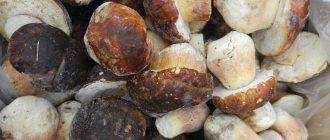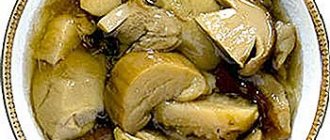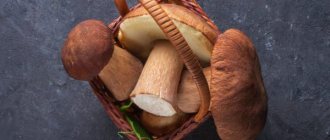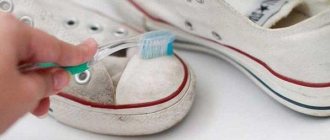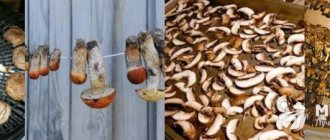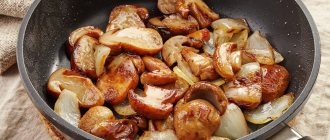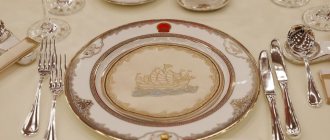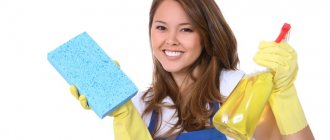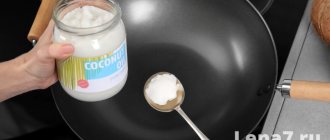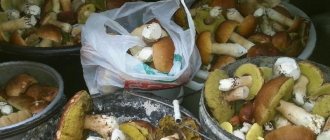Mushrooms
0
1862
Article rating
Kira Stoletova
Porcini mushrooms are extremely popular among mushroom pickers due to their taste and ease of preparation. Their disadvantage is the need for careful preparation before consumption. Cleaning porcini mushrooms is done to get rid of foreign particles that are on the surface when growing in the forest.
Cleaning and processing porcini mushrooms
Features of cleaning each type of mushroom
How to clean porcini mushrooms?
We first wash the porcini mushrooms with a brush, and then thoroughly clean them with a stiff brush. After this, we cut off all the dark and wormy places and cut the mushroom lengthwise into two identical halves.
How to clean boletus?
It is much easier to clean boletus in the forest, during the process of collecting mushrooms, as we have already discussed above. Then all you have to do at home is rinse the mushrooms with cold running water. If you have already brought the mushrooms home, then in order to facilitate the process of cleaning them, immerse the boletus in boiling water for half a minute. The skin of mushrooms treated with boiling water will be removed very easily and simply.
How to clean honey mushrooms?
Before cleaning, honey mushrooms need to be sorted out and then rinsed with cold running water. To make the mushrooms look more beautiful, you can use a sharp knife to peel off the film-like skirt on the legs. But this does not affect the taste of future mushroom dishes. Only the cleaning process will take much longer.
How to clean chanterelles?
Cleaning chanterelles, as a rule, does not take much time. The chanterelles should be carefully placed in a bowl of water and left for 5-10 minutes. When the dirt gets wet, all you need to do is rinse the mushrooms with cold water.
Gently rub the cap with your finger to remove dirt and any stains from it.
Photo: photl.com
How to clean milk mushrooms?
It is best to soak milk mushrooms in cold water for 24 hours before cleaning. Then clean with a knife or stiff brush. If the mushroom is severely damaged, you can trim it with a sharp knife. An ideally cleaned mushroom should be white.
How to clean boletus mushrooms?
Before cleaning, boletus mushrooms need to be cut into two parts: separate the caps from the legs. It is enough to rinse the caps with water, and the legs should be cleaned with a sharp knife, cutting off a thin layer of skin from them.
How to clean boletus mushrooms?
The process of cleaning this type of mushroom is no different from boletus mushrooms. We also cut it into two parts, wash the caps, and scrape off the top film from the legs with a sharp knife.
How to clean champignons?
Champignons should not be washed with water, as after absorbing moisture they can become completely tasteless. It is enough to shake off the soil and dirt from the mushrooms, and then wipe them thoroughly with a wet towel.
Photo: photl.com Properly and thoroughly cleaned mushrooms will delight you with a special taste and aroma in prepared dishes.
Anna Pasechnik
How to clean the cap of a porcini mushroom
Fresh mushrooms do not last long, so within 3-4 hours after collection they must be processed - sorted and prepared for canning or used for preparing mushroom dishes. If you cannot process the mushrooms right away, transfer them to an enamel bowl without a lid and store them in the refrigerator for 1-2 days. At the same time, they should be shaken and shifted as little as possible and handled carefully so as not to leave dark spots and dents. Preparing mushrooms for culinary processing involves clearing debris (adhered blades of grass and insects) and removing darkened or damaged areas.
Before cleaning the porcini mushroom cap, clean it with a knife with a stainless steel blade or a soft cloth.
The cut on the legs is updated, removing the most contaminated part. If mushrooms from the forest are heavily contaminated, they are soaked in water and pressed down with a weight to ensure complete immersion. After 10-20 minutes, the caps can be easily washed off from adhering grass and leaves. You should not leave mushrooms in water for a long time, as they will actively absorb it, which will ultimately negatively affect their taste and aroma and make the caps brittle. Then the mushrooms are washed with clean running water. Particular attention is paid to washing the lower surface of the mushroom caps, which can be spongy or lamellar, and therefore most susceptible to contamination. Then the mushrooms are left in a colander or sieve to drain the liquid. The exception is mushrooms intended for drying and, sometimes, freezing. They are only cleaned, but not washed with water, much less soaked. See how to clean the porcini mushroom in the photo, which shows the whole process step by step.
Preparatory stage – a trip for porcini mushrooms
If you are lucky enough to live in places where porcini mushrooms grow, and you decide to prepare them for future use, or at least cook mushroom soup, then you should take care of cleaning the mushrooms in advance.
After all, everyone knows how much time and nerves it takes to clean and wash mushrooms. And yet, with enviable tenacity, mushroom pickers, without thinking about the consequences, once in the forest, strive to quickly fill the basket with mushrooms. They get so excited that they forget about everything in the world! Even the fact that after such a promenade they will have to sit for a long time over a mountain of mushrooms and sort through, clean, wash...
But you can make your task easier and start processing (cleaning) mushrooms right in the forest.
To do this, when going for mushrooms, you need to take with you, in addition to a knife, a brush, as well as paper or waffle towels. Such a soft and small brush can be bought at any hardware store. Or purchase a toothbrush with soft bristles specifically for “quiet hunting”. A brush is useful for superficial cleaning of mushrooms, and towels are useful for wiping these mushrooms from dust and dirt. And of course, the basket must be clean - free of debris and last year’s leaves.
Cleaning and processing porcini mushrooms
Porcini mushrooms are extremely popular among mushroom pickers due to their taste and ease of preparation. Their disadvantage is the need for careful preparation before consumption. Cleaning porcini mushrooms is done to get rid of foreign particles that are on the surface when growing in the forest.
Cleaning and processing porcini mushrooms
Should champignons be peeled or not?
There are also serious battles on culinary forums regarding cleaning champignons. Some housewives are convinced that they only need to peel those mushrooms whose cap diameter is more than 3 cm. In other words, you need to prepare for the process of preparing a dish of champignons in advance, and, armed with a ruler, dive into the measuring process. There is another version according to which champignons do not need to be cleaned. This is what famous chefs do
It is important for them to cut the mushrooms correctly.
Where is the golden mean in these disagreements? And which “advisers” should you listen to? We understand the intricacies of preparing champignons for further cooking.
- Champignons, the size of which does not exceed 2 cm, do not need to be peeled, since their skin on the cap is very thin. From such mushrooms, it is enough to brush off the remaining substrate and renew the cut.
- Remove the skin from the champignon caps, which are 5 cm in size. If this is not done, it will be felt while eating. Even prolonged heat treatment will not soften it.
We prepare the champignons for further cooking as follows: brush off the adhering dirt, grab the edge of the cap with the tip of a knife and pull it towards the middle. Don't forget to update each mushroom's cut.
If the mushrooms have been in the refrigerator for some time, then cut off more pulp at the cut point to remove the dried part. It will still be noticeable after cooking.
How to clean large champignons
We prepare mature champignons for cooking as follows: if the skirt on the champignon in the finished dish does not look aesthetically pleasing to you, then we get rid of it. Some do the same with the brown plates under the cap. However, the taste of the mushroom dish depends on these plates.
Cleaning in the forest
The preparatory stage for cleaning porcini mushrooms is to carefully examine them immediately after cutting. The product must be carefully inspected from all sides for visible structural damage, insect marks or rot.
Next, start cleaning the legs. The lowest part is usually completely removed due to the large accumulation of dirt. The cut site is inspected for the presence of passages from worms (larvae). If there are large quantities of them, it is better to throw away the mushroom. A few passages are not dangerous and should be carefully cut with a thin knife. This must be done immediately after collection: the worm can spread to other mushrooms in the basket - having “sentenced” one of its homes, it will go in search of a new table.
The next step is to inspect the bottom of the cap. It often contains small insects, worms and the remains of their vital activity.
The hat must be carefully cleaned of pine needles, moss and grass.
Cleaning porcini mushrooms after picking in the forest
“Silent hunting” is an activity that cannot be rushed. If you are already lucky enough to stumble upon a large family of boletus mushrooms, you should not headlong cut off all the mushrooms and immediately throw them into the basket. In the forest, immediately after collection, it is much easier to clean the legs and caps of large debris. This will make the job of returning home much easier.
After cutting, carefully inspect the mushroom. There should be no rotten pulp on it. If everything is in order with the boletus, proceed to preliminary cleaning. First, you need to cut off the bottom of the stem to check for worms in the flesh. If you find only one hole left by insects, you can simply cut it out and put the fungus in a basket. But, if there are two or more such moves, it is better to throw away the boletus.
Note: If you put a wormy specimen in a basket, the insect will not only continue to gnaw passages in it, but may also move to other specimens, and part of the harvest will be spoiled.
After this, you can simply remove large debris from the stem and cap. Ideally, it is better to do this with an old toothbrush with soft bristles, but most mushroom pickers prefer to remove leaves and needles simply by hand, and do the final cleaning at home.
Preparing mushrooms
After arriving home, you should immediately distribute them by type to make it easier to figure out how to process mushrooms and what to cook from them. Then you need to take a sharp knife and cut out all the dark places, and also check the product for the presence of insects or worms. The caps must be carefully wiped with a brush or brush, and then the tip of the stem must be cut off.
When all the mushrooms are cleaned, they should be washed thoroughly
But this must be done with extreme caution, since a long stay in water will not have the best effect on the quality, and their taste will change slightly. Mushrooms must be placed in a colander and rinsed a little with cold water, and then allowed to drain.
If you know how to properly process mushrooms, then the juice that remains should not be thrown away. It can be used to prepare other dishes.
If there are a small number of wormholes on the mushrooms, the product should be soaked in cold water, after adding salt. Then the worms will come out and remain in the container with water. In the case where the mushroom is very difficult to wash, since it is excessively contaminated, it can be placed in water and left for some time.
It is more convenient to wash in a basin or in a large saucepan
It is important that the mushrooms are covered with water. To prevent them from floating up, you can put plywood or a board with a small weight on top
Once the leaves and other debris are soaked, it will be very easy to separate them.
Those mushrooms that are intended for pickling must be soaked. For milk mushrooms, you should scrape off the top black layer with a knife, and for buttermilks, remove the films from the caps. When thinking about how to process volushka mushrooms, you should remember that they are soaked raw and then pickled.
Those species that contain milky bitter juice need to be soaked for 2-3 days, changing the water at least three times a day. It is better to place the container in a cool place so that the mushrooms do not sour.
Experienced mushroom pickers claim that soaking is not as beneficial as is commonly believed. This is due to the fact that along with bitterness, nutrients and protein substances leave, the nutritional value of the product decreases, and the mushroom becomes soft and flabby. Therefore, experts do not recommend soaking for more than 2 days. If you figure out how to process mushrooms, then after cooking they will always turn out delicious.
When sorting, you need to pay special attention to whether there are any poisonous species in the basket. Some toadstools are very similar to russula
You can distinguish them by their stem: if the russula is real, its stem is straight to the very base, while in a false mushroom it expands downwards. It will also be useful for beginners to know that the skin of the toadstool cap is removed from the edge to the center. If there are doubts about the quality, you should never use them; it is better to throw them away immediately. You should not collect those mushrooms that grow near highways or landfills: they can cause severe poisoning.
Mushrooms from ecologically clean regions
What to do with mushrooms collected away from industrial zones? Let's say they are collected in the thicket of Siberian forests or on the slopes of the Ural Mountains. Many ignorant people believe that such mushrooms do not need pre-cooking. But any experienced mushroom picker is sure that they also need to be boiled. For what? The “because people have always done it this way” principle works here.
Indeed, no matter how many centuries people have been using mushrooms for cooking, they have been using pre-heat treatment for as long.
From a rational point of view, this also makes sense. The fact is that mushrooms accumulate not only those toxins that they receive from the external environment, but also the products of their own vital activity.
How to properly collect and clean mushrooms in the forest
Proper collection of boletus mushrooms begins with choosing a place away from roads, industrial enterprises, and farms where chemicals hazardous to health may be used. Mushrooms have a large mycelium, stretching for tens of meters, with a good ability to absorb toxins. Therefore, it is necessary to go far into the forest from populated areas.
Important! The porcini mushroom has several doubles; when collecting, you need to pay attention to the cut of the pulp. In a good edible fruit it does not darken.
It is important to collect the product correctly, without harming nature:
It is important to collect the product correctly, without harming nature:
According to one version, this mushroom is called white because it does not need to be scrupulously cleaned.
The raw materials collected according to all the rules of a mushroom picker are directly inspected and initially processed: adhering particles of soil, vegetation and dirt are removed. The rest of the preparation steps are done at home.
How to collect porcini mushrooms
When picking porcini mushrooms, cut off the stem with a knife. This will prevent sand and soil contamination, which means the product quality will be high. In addition, mushroom pickers who twist the mushroom out of the ground damage the mycelium, and this can negatively affect the yield in the next season.
The most important rule of a mushroom picker is that the processing of any mushrooms must begin immediately, while still in the forest, because this is a perishable product. Cut mushrooms release toxins during storage
If the fruiting body is infested with larvae, contaminated, or broken or bitten, the mushroom may not be edible when you are ready to process it. Even one spoiled copy in a basket can ruin everything you have collected!
Process your prey in the first 3-4 hours, otherwise all your efforts to search and collect will go down the drain. Read on to learn how to peel mushrooms. First of all, sort your catch by type - what is suitable for canning, drying, and what for cooking right now. To clean whites, you will need several suitable containers: a bowl of warm water, a large container for suitable raw materials and a bag or basin for waste.
To preserve the mushrooms, do not expose them to unnecessary mechanical damage; handle them carefully; unnecessary touching and squeezing will cause dark spots to form on the fruiting body, and spoilage will be accelerated.
First of all, boletus mushrooms clear forest debris, particles of earth, and clean damaged areas. Contaminated areas can be wiped with a damp cloth or brushed. A sharp stainless steel knife is suitable for this work to avoid oxidation. The cut made in the forest is removed along with particles of moss and sand. If there is too much debris and dirt on the mushrooms, they should be soaked in water to soak for about 20 minutes, no more. Press the mushrooms down by placing a lid or plate on top to submerge them completely. Slightly soaked foliage is easily separated from wet caps and stems. Make sure that the mushrooms do not sit in water for too long, otherwise they will absorb the water like a sponge and lose their taste. If the product is intended for drying or frying, they should not be soaked. Difficult-to-remove dust and dirt can be washed off with cool running water
Pay attention to the condition of the porous layer under the cap of the porcini mushroom; it can be contaminated with particles of earth, sand and dust. This is unacceptable during conservation, since any contamination can cause poisoning. Washed mushrooms need to be allowed to dry.
For drying, select specimens that are least contaminated; they cannot be washed or soaked.
Cleaning methods
For different types of processing, mushrooms are cleaned and prepared in different ways. For drying, the fruiting bodies are used whole or cut into pieces. For freezing, also cut into slices. White caps are suitable for pickling.
If you notice larvae, you need to soak the infected specimens in a salt solution for 2 minutes. Take 10 grams of salt per liter of water at room temperature, stir until the crystals are completely dissolved and drop the suspicious fruits.
Processing boletus mushrooms before drying
The simplest, most convenient and affordable way to prepare porcini mushrooms is drying. The product retains its noble taste and aroma if stored correctly. And you need to store it separately from strong-smelling products, in a fabric bag, in a warm and dry place at room temperature. See below for how to peel mushrooms.
Frozen porcini mushrooms are good for frying. The product retains its noble taste, aroma and beneficial properties. If possible, store the product frozen, you should use this method.
Preparing for frying
A product intended for frying should be treated in the same way as for drying. Excess moisture is not needed here at all; water can spoil the taste of the future dish. Therefore, we dry clean whites intended for frying only.
If the fruits are dusty or contaminated with sand and soil particles, wrap them in a damp cloth and shake lightly.
Boletuses are often called redheads for their bright red cap. This species is also a desirable and tasty prey. By preparing it correctly, you can get a nutritious and tasty dish or preparation for the winter. Boletuses are also used for drying, freezing and fresh cooking.
You can also clean the boletus with a sharp knife. Separate the stems from the caps and carefully check them for worms. Clean damaged areas. If redheads are intended to be eaten directly, place them in a saline solution. To dry the product, wrap the redheads in a damp cloth and shake to remove dust and dirt.
How to cut porcini mushrooms
During the process of drying, pickling, freezing or salting, it is advisable to sort boletus mushrooms by size, since small specimens cook much faster than large ones. Very large specimens are usually cut into one or several parts. It is better to do this along the cap and stem, then both after freezing and after drying, the product will look attractive (Figure 6).
Figure 6. Slicing boletus mushrooms
You can marinate and salt porcini mushrooms whole, but some housewives prefer to separate the stems from the caps. In fact, the process of cutting boletus mushrooms does not affect their taste in any way. Its main purpose is to make the pieces more uniform in size or to finally check the pulp for worms.
If you plan to boil and freeze mushrooms, it is better to cut them into approximately equal pieces. For example, the leg is cut into thick slices, and the cap is simply divided into several parts.
The process of cleaning porcini mushrooms is shown in more detail in the video.
Pre-cooking times for different types of wild mushrooms
A real delicacy and everyone's favorite is the boletus mushroom. Its pulp is of great value due to the content of vitamins, microelements and easily digestible protein. Porcini mushrooms need to be cooked for 40-60 minutes before frying. It is advisable to salt the water and add a small pinch of soda to it.
Forest champignon or pecheritsa is much more aromatic, larger and tastier than store-bought. Everything is clear about mushrooms bought in the supermarket. But is it necessary to boil mushrooms before frying if they are collected from a clean forest? Unlike its “cultivated” counterpart, forest champignon requires preliminary boiling. Moreover, when boiled, its white-silver pulp turns the broth a terrible black color and makes it cloudy. Such a broth will not decorate any dish, and will not bring any health benefits. So, remember, you need to cook forest champignons for at least half an hour!
How long should you cook boletus mushrooms before frying? The same amount as most other mushrooms - 40 minutes. This will be quite enough. Before boiling, boletus mushrooms need to be washed especially thoroughly.
Butter, so beloved by many, after an hour of boiling becomes absolutely clean and safe for consumption. During this time, they do not lose their crispy structure, do not become overcooked, and remain strong. The first boletus broth has an unpleasant color and tastes bitter. But the second one is fragrant, light and healthy.
Chanterelles - tender, amber-red, so elegant and fragrant - behave in the primary broth in much the same way as champignons. Their broth is cloudy, brown, and completely unappetizing. We pour it out, wash the mushrooms and start preparing delicious, healthy and beautiful chanterelle dishes.
Subtleties of cleaning before frying and cooking
Boletus is exceptionally tasty when fried, as well as in famous soups, where it looks like white meat without losing its color when cooked.
The mushroom bodies of the house selected for these purposes are cleaned from surface debris with a knife blade, adhered pine needles and blades of grass are removed, and soil is scraped off the stem. Then you can wash them. If the mushrooms were collected in sandy areas, or, for example, in the rain, then they may be more contaminated than usual, and then it is recommended to soak them in water for a quarter of an hour, pressing them with something on top, so that staying in the water is effective - such soaking will separate sand and particles of earth.
After rinsing in running water, place the boletus mushrooms in a colander and allow excess liquid to drain. Next we work with a knife: we need to eliminate everything from the fruit that easily lags behind, scrape the leg, refresh the lower cut and check for worms, remove all dark spots of pulp.
Before frying, prepared mushrooms can be doused with boiling water; this will be a control rinse that removes final debris and kills microbes. Then let the water drain and air dry. That's it, the harvest is ready to use in your favorite frying recipe.
For cooking, you can also manipulate boiling water. Since white mushroom is a high-quality product (of course, if it is not collected in radioactive and chemically contaminated places), there is no need to additionally boil it before the main cooking, as is the case with mushrooms of lower categories.
Mushroom slicing and cooking
Since porcini mushrooms can be eaten together with the stem, they need to be cut completely, and it is recommended to cook the stems separately. To begin with, the cap is cut into approximately equal pieces - into 4 or 6 parts, depending on the size. Then they move on to the leg - it is recommended to cut it into thin slices.
White ones do not need heat treatment before cooking, as they are not poisonous and do not have a bitter taste. As a rule, russula, milk mushrooms and trumpet mushrooms are cooked.
However, if you want to play it safe, you can carry out this procedure. However, it should be borne in mind that processing will affect the quality of the product, and whites may lose some of their beneficial properties and become less tasty and aromatic.
There is no need to additionally prepare the product for heat treatment; simply cutting them is enough. Cook in plenty of salted water for 5 to 15 minutes, no more. If you increase the time to 30 minutes, the pleasant taste may completely disappear, and then you can simply throw away the mushrooms.
When cooking is finished, the broth can be poured out or frozen for future use.
Preparing for freezing and drying
The general rules in the case of drying and freezing change by one point: contact with water is excluded here. That is, neither quick rinsing nor, moreover, soaking is carried out. To remove dirt efficiently, use a cloth instead of water, slightly moistening it for better adhesion of debris, or a brush from a hardware store, or even an old toothbrush.
- first remove all large debris from the cap and stem, clean off the root part with a knife;
remove all fragments that are beginning to rot or have darkened for another reason;
update the cut, look inside the leg, usually the worminess begins there; remove the part of the fruit body eaten by worms; scrape the stem with a knife as a final finishing action.
At the end, you can go over the surface again with a cloth (a new one, not the one you used at the beginning of the cleaning process) and start cutting before drying or freezing.
Do I need to soak and how to do it?
Is it necessary to soak boletus mushrooms if they are not canned? The question is controversial. Experts in the mushroom business and preparations claim that almost any mushroom should be pre-soaked:
- you can soak mushrooms in order to rid the fruits of the bitter taste;
- Since any mushroom, including boletus mushrooms, is a natural sponge that absorbs harmful substances found both in the air and in the soil, the fruits should be soaked to avoid possible poisoning, harmful effects on the body, and cleansing products from questionable components.
Such processing of boletus mushrooms requires special attention if you plan to prepare the fruit for long-term storage, that is, you have chosen one of various canning recipes.
Boletus can be grown in several accessible and relatively uncomplicated ways:
- Preparing for the winter using the pickling method.
- Preparations for lovers of savory appetizers and salads with the addition of herbs and spices.
- Canning semi-finished products. In this case, clean and washed mushrooms are fried in oil with the addition of salt, spices and herbs (to taste) and then, when semi-prepared, they are rolled into jars and placed in the refrigerator or cellar.
- You can simply peel and wash the boletus mushrooms, cut them into pieces of the desired size and freeze them raw.
- A favorite preparation is the usual drying of fruits, which saves cooks from unnecessary hassle and long preparations.
How to properly clean porcini mushrooms before cooking
The porcini mushroom (boletus) is one of the most delicious and aromatic. Therefore, every housewife happily prepares dishes from porcini mushrooms, dries them for the winter, freezes them and rolls them up.
It is very important to process and clean porcini mushrooms as quickly as possible after harvesting. The ideal option is to do this within the first 5 hours, and in extreme cases - within the first 24 hours
If you have collected or purchased a large number of mushrooms, then while you are processing one part of the mushrooms, you can put the other in a bowl, cover with a wet towel and place it on the bottom shelf of the refrigerator. It is not recommended to store porcini mushrooms for longer than a day, so they need to be cleaned and processed as quickly as possible.
Peeling porcini mushrooms at home is quite simple and quick. If you are responsible for picking mushrooms in the forest and each time, before putting the next mushroom find in the basket, shake off the pine needles, debris, grass from the mushroom and cut off the bottom of the mushroom, and clean off the dirt and moss, then cleaning mushrooms at home will go much faster.
If you are going to dry peeled porcini mushrooms in the future, then do not wash them after cleaning, but just wipe them well with a dry sponge or brush. If you cook them, then after cleaning, rinse the mushrooms well in water.
In order for fresh mushrooms in the finished dish to remain elastic and retain their taste and aroma, immediately after purchasing or collecting they need to be prepared - cleaned and washed. Knowledge of the basic rules and methods of processing mushrooms will help you do this work correctly and efficiently.
Mushrooms should be cleaned and washed immediately on the day of collection. If this is not possible, then they can be stored for several hours in the refrigerator or other cool place (for example, in a cellar).
The cleaning process begins in the forest. The needles and small debris are removed from the mushroom, the roots are cut off or cleared of soil, and damaged specimens are removed. The prey brought home must be immediately sorted and sorted into varieties, since each species has its own processing methods.
What tool to use to quickly clean
A small, sharp knife can help you peel mushrooms quickly and easily after picking. Thanks to the thin tip, you can easily remove worms from mushrooms and clean off debris without crumbling the fragile pulp. If the dirt cannot be removed, it is better to carefully cut it off.
Is it necessary to wash
To easily process mushrooms after harvesting, you do not need to wash or wet them before starting work. Otherwise, they will become slippery and fall out of your hands, and some types simply fall apart or lose their taste when exposed to water.
Dry cleaning is best. To remove sand and dirt from mushrooms, you can use a soft brush. Those intended for drying do not need to be washed. It is enough to clean them with a damp cloth. If you plan to fry, it is permissible to quickly rinse with water.
It is recommended to keep products that are planned to be salted, boiled or pickled for a short time in a weak saline solution. Then rinse. When pickling mushrooms that have a bitter taste, you need to keep them in cool water for 1-2 days, changing it periodically.
How to wash and peel porcini mushrooms for freezing
Modern kitchen appliances, in particular freezers, allow you to enjoy boletus not only during the harvest season, but also in winter. Naturally, for this, the fruiting bodies need to be properly prepared and cleaned.
Unlike cleaning before salting or heat treatment, preparing boletus mushrooms for freezing includes mandatory washing and soaking in salted water. First, we carry out traditional activities: we clean the caps and stems from large debris, cut off the lower part of the stem and place the fruiting bodies in a large bowl or pan with salted water. The mushrooms should sit in this solution for about an hour. This will make it possible to remove insects, worms or insect larvae from the pulp that may be accidentally missed during the cleaning process (Figure 5).
Next, remove the boletus mushrooms from the salt water, rinse thoroughly and place in a colander. To make the frozen product truly tasty and aromatic, it is better to remove excess moisture from the surface. After this, it is enough to put them in bags or containers. Small specimens can be frozen whole, but large ones are better cut into several pieces.
Figure 5. Preparing porcini mushrooms for freezing
If you want to make a preparation that will be almost ready to eat after defrosting, it is better to cut the boletus mushrooms into small pieces, lightly boil them in water and place them in portioned bags or containers. As a result, you will receive a ready-made preparation that will help you prepare delicious fried mushrooms at any time of the year.
Description of the appearance and differences between false doubles
Valuya was lucky with his poisonous doubles. There is only one dangerous mushroom that pretends to be a bull-fist - the false valui. Let's take a closer look at what the difference is.
| Valuy (Russula foetens) | False valui (Hebeloma crustuliniforme) |
| from the genus Russula of the Russula family | from the genus Gebeloma of the Arachnidaceae family |
|
|
White mushrooms
A mature specimen is distinguished by a large plate-shaped cap with a convex top. It can reach a diameter of 30 cm. The surface of the cap can be wrinkled and cracked. The skin does not separate from the pulp and has a dark yellow, red-brown or brown color. After rain the skin is shiny, but in dry weather it is matte.
The leg of the boletus is thick, has the shape of a cylinder or club, and reaches 10 cm in girth. It has a white surface with reddish inclusions. The pulp of the mushroom is juicy, the fibrous structure does not darken when cut. In its raw form it does not have a strong aroma, but when cooked it smells strong and pleasant. The taste of the pulp is rich, mushroom, with pronounced nutty notes.
Processing at home
Depending on what dish will be prepared from the mushroom product, it is prepared accordingly. This is a fairly simple process, but it requires precision and concentration.
For cooking
If you plan to boil, fry or stew them, then you need to not only remove large debris, but carefully clean the boletus mushrooms with a knife. There may be wilted areas, traces of a slug or worm on different parts of the fruiting body. They need to be cut off and scraped out thoroughly.
After processing, the purified product must be washed
. It is also advisable to soak the mushrooms, since small particles of dust and insects accumulate in the tubular layer. If you place the raw materials in salted water, after 10–15 minutes the debris will float to the surface.
After this, the water is drained and the boletus mushrooms are rinsed well. If darkening is detected on the stem or cap, this area must be treated again with a knife. Only after this are the mushrooms cut for further cooking.
Important! You need to clean the collected mushrooms no later than 5 hours after collection: the raw pulp quickly breaks down and loses its beneficial properties.
Before freezing
Before freezing, the raw materials are also thoroughly cleaned, but not washed, because the pulp has the properties of a sponge
. If you wash a mushroom, the water under the influence of low temperatures will turn into ice and destroy the tissue of the product. Such boletus becomes tasteless, brittle and loses most of its beneficial properties. It is better to clean the hat and stem using a soft bristle brush and a damp cloth.
Basic cleaning
All dirt must be removed from the mushrooms
After washing, the porcini mushroom is completely cleaned. Dry the product with a regular or paper towel.
To clean the boletus, you will need:
- large capacity;
- knife;
- Toothbrush;
- paper towel or dry rag.
If the leg was cut poorly in the forest, additionally cut off a small lower part and clean it with a brush to remove any dirt present. Wipe the hat with a paper towel to remove dust and remaining moisture. Then carry out a complete cleaning with a brush. They remove not only dirt, but also easily exfoliated pulp: it does not have any beneficial or taste properties. Next, the mushroom is further wiped and washed under running water.
Irina Selyutina (Biologist):
To ensure that all cleaning is carried out efficiently:
- Buy a special brush, or use a medium-hard toothbrush.
- When inspecting the cap, cut it in half to make sure there are no dark spots or passages of insect larvae.
- The cap can be separated from the stem, because often they are prepared separately.
- Rinse the mushrooms under running water, the stream of which is supplied under pressure. This operation is best done within 10 minutes.
Then an additional inspection is carried out for the presence of worm passages. The darkened areas are cut off, and the product is completely dried on a wire rack, after which it is ready for cooking or frying.
Cleaning porcini mushrooms for drying
If the product is to be dried in an oven or in the sun, it should never be allowed to get wet. The mushroom quickly absorbs large amounts of moisture, which makes it impossible to properly heat-treat it.
The product is thoroughly cleaned of dirt using a brush. It can also be wiped with a rag or damp towel.
Advice. Cut the thick legs of boletus mushrooms into circles about 3 cm thick for drying, but thin ones - lengthwise into 2-4 parts.
